Bushing vs Bearing Barbell: Which Is Better?
Author:
Unlock your full potential by engaging with our experts and community! Have questions about your fitness journey or looking for expert advice on weightlifting techniques? Don’t hesitate — leave a comment below and Ihor Shymechko will provide a personalized answer and insights to help you reach your goals.
Torokhtiy is reader-supported. Some links are affiliate links, and we may earn a commission at no extra cost to you. See our disclosure page for details.
If you want to facilitate or improve your lifting performance you’ve heard seasoned lifters talking about bushing or bearing stuff claiming it is a great solution for reducing friction and limiting your gym gear wear-off.
However, you may bump into some problems of bushing vs bearing barbell to choose better. In any case, consider your barbell specifications and workout goals.
So, if you’re intended to take up Oly lifting, pick up a bearing barbell. But, if you prefer a more universal option that fits general strength workouts and powerlifting, or as a supplement to your home gym, choose a bushing one.
Think well about bushing vs bearing barbell will fit your workout regime. Choose the first option if you want to have a wider range of exercises. Or switch to bearing, if you’re a pro weightlifter who needs a greater barbell spin.
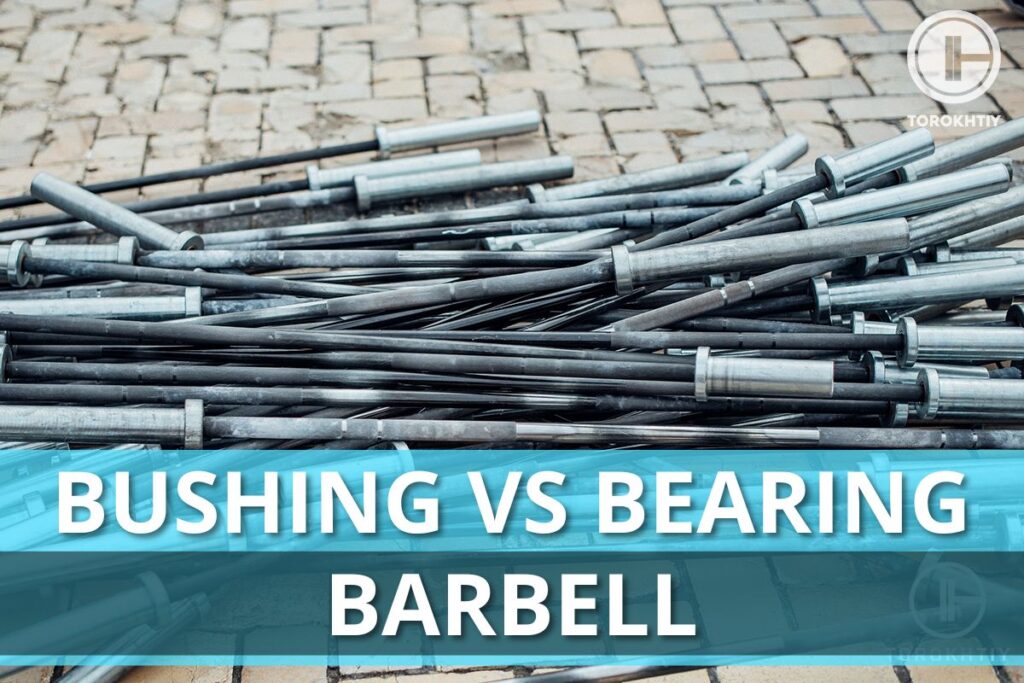
What Is a Bushing Barbell?
A seasoned lifter knows that a barbell spin plays an essential role while training with weights, which is as important as picking up a high-quality barbell. Let’s imagine an Olympic barbell design: here’s a shaft with two sleeves holding plates on the sides and making them rotate freely.
This spinning prevents the barbell rotation in your hands and warns you from injury. You should consider what type of lifts you prefer to perform when selecting the bushing or bearing spin of the barbell.
Here we start with barbell bushing which is usually applied for slow and heavy lifts like in powerlifting exercises, i.e. squat, bench press, and deadlift. What are the peculiarities of this rotation system?
- Gives a slower and steady spin.
- Is cheaper than a bearing system.
- Has one bushing near the collar and the second one at the barbell end.
- Can be multi-purpose and be used for the training bars.
Why is bushing a proper rotation system for powerlifting? Since the SBD exercises are linear, there’s no need for excess spinning. Powerlifting movements require strong balance and the bushing system can bring extra stability for a lifter.
You’ll find several bushing types on the market:
- Bronze is the most common one thanks to its durability and affordable price. Its pores are infused with oil that vouches for longer serving.
- Composite bushing aims to prolong a barbell service life and reduce the noise level. The material guarantees quiet spinning and the system’s long life expectancy. But, it’s a bit pricey.
- Stainless steel barbell bushing isn’t so popular. It’s hard and durable, but it can cause shaft damage.
- The brass system isn’t very common because it’s too soft and can be deformed over time.
Our Recommended Bushing Barbell
Rogue Ohio Power Bar
- Bar Weight: 20 kg
- Bar Length: 86.5’’
- Material: Steel
- Shaft Diameter: 29 mm
- Tensile Strength: 205,000 PSI
- Knurling Type: Powerlifting
- Bearing/Bushing: Bronze bushings
- Coating (finish): Cerakote color shaft finish
- Center Knurling (yes/no): Yes
- Sleeve Diameter: 50mm
- Sleeve Length: 16.25’’
- Best Uses for: Bench, squat, and deadlift, with a focus on powerlifting exercises
- Maximum Load: No weight limit; you’ll likely run out of room before you reach the max capacity
- Warranty: Lifetime warranty against bending
We want to present to you one of the best bushing barbells from the leading American sports equipment company, the Rogue Ohio Power Bar with a 45 lb weight. It comes with black e-coating that guarantees long-lasting due to its anti-corrosion and resistance rate.
The loadable sleeve length is 16.25″. Speaking about the tensile strength the bar can withstand 205 000 PSI, vouching for superb rigidity and stability.
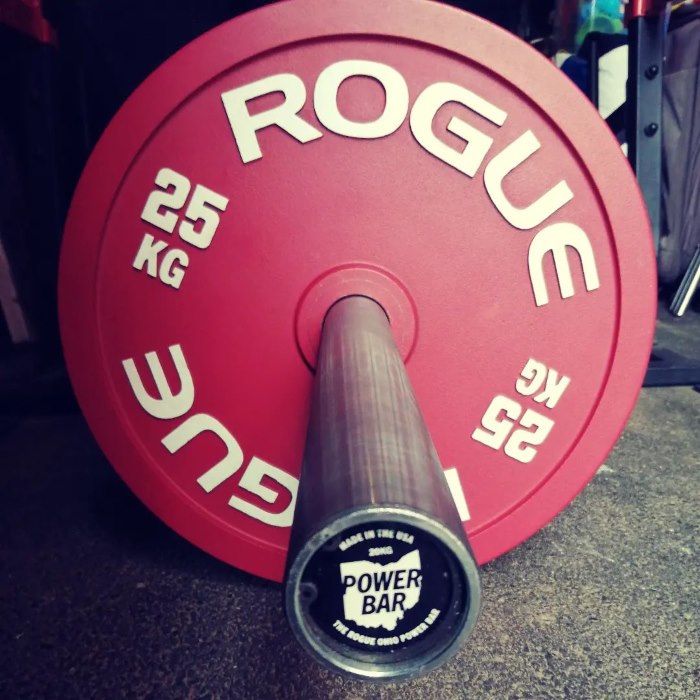
Being a powerlifting barbell, it’s equipped with zinc sleeves, top-notch bronze bushing, and aggressive knurling of the 29mm shaft. The knurled design is deep enough while staying moderately mild to your palms. The center knurling adds more friction for you to be able to hold the loaded weights.
So, you’ll succeed in performing the powerlifting exercises, i.e. squats, bench, deadlift, without a hitch due to the smooth spin and comfortable feel of the bar.
What Is a Bearing Barbell?
Compared to the bushing, a bearing barbell comes with a lighter and faster spinning system that is designed just for Olympic lifts. It provides a more rapid movement performance that is perfect for such Olympic exercises as snatch, clean & jerk.
This spinning system is popular among Olympic lifting athletes and brings a better spin rate. Such bars include 2-5 cartridges in the sleeves: the more cartridges you have, the smoother spin you’ll get. A cartridge itself has a range of metal needles in the inside edge which can rotate around the shaft.
The barbell bearing’s spin system is more expensive, the tighter the needle bearing fits, the better its quality is. The peculiarity of a tightly-fitting bearing is that it spins slower when it’s out of weight and spins well when loaded.
There are three types of bearing spin systems that are placed between the bar and sleeve aiming to reduce friction:
- Ball bearing is the cheapest option.
- Thrust bearing.
- Needle bearing combines bearing with bushing.
Our Recommended Bearing Barbell
A top pick model of barbell bearings is the Eleiko IWF Competition bar which is designed specifically for serious Olympic lifters. The barbell is approved by the International Weightlifting Federation and is designed from prime-quality steel with Swedish precision.
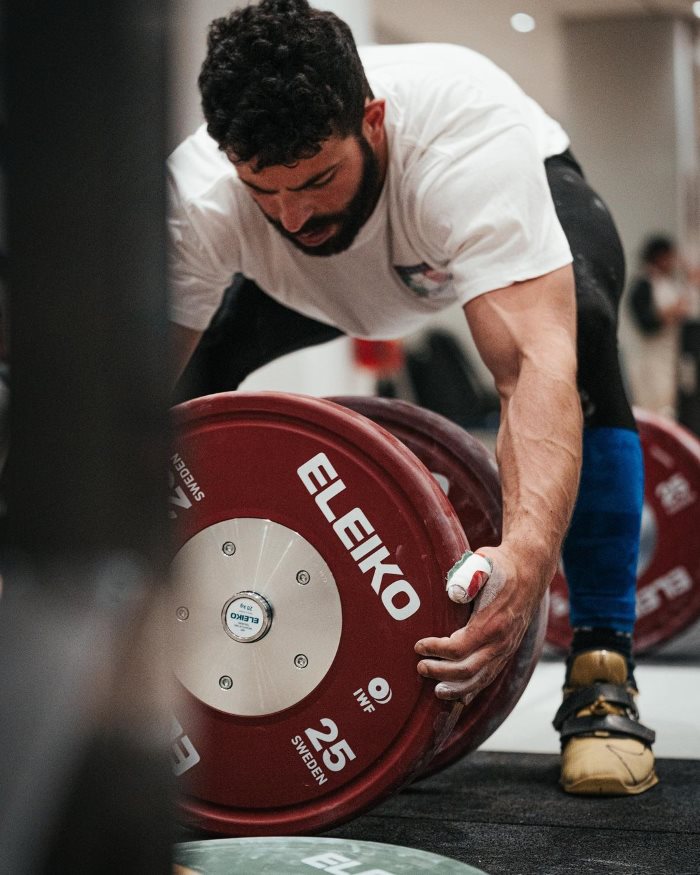
It has sturdy and aggressive knurling and is designed to be used for a short time to lift the maximum possible weight. Eleiko barbell has the following characteristics:
- 16.34″ loadable sleeves
- Needle bearing
- Barbell length: 86.6″
- Barbell weight: 44 lb
This first-class barbell provides weightlifters with controlled and stable rotation while loading. So, athletes will feel a more optimized performance and connection with the barbell.
Bushing vs Bearing Barbell: 4 Key Differences of Spin Systems
When it comes to buying a barbell, an athlete should be abreast of what spinning system it should be equipped with considering their workout intentions. It’s important to make the right choice to enhance weight lifting training and mitigate injuries. Let’s outline the main points that make these rotation systems differ one from another.
1. Purpose of the Usage
Sometimes athletes use these two spinning systems vice versa: bearings for slow lifts and bushings for fast ones. Both of them can bring good spinning, but if using a bearing spin system for slow lifts, a lifter may feel an imbalance when performing the SBD exercises.
On the contrary, if you try to perform powerlifting movements with the help of a bearing barbell, a loaded barbell will wobble in your hands.
2. Rotation Momentum
Bearing barbells have a smooth rotation that makes them a better option for Olympic lifts. But, they will be pricier. Barbells with bushings are more budget-friendly, however, they won’t give you enough spin, but friction.
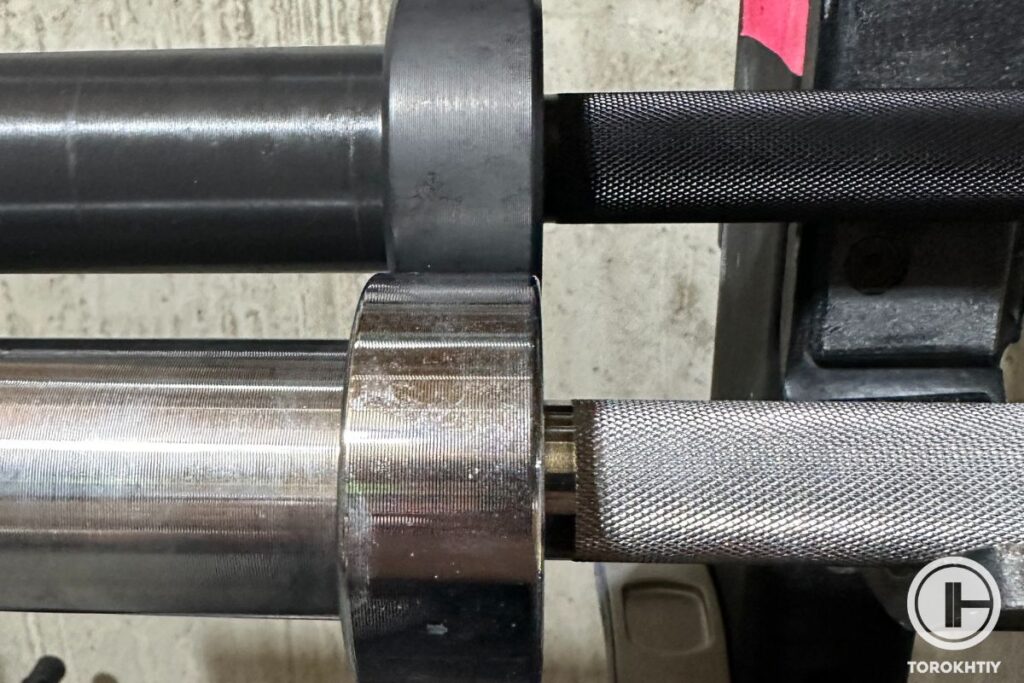
3. Type of Lifting Workouts
Bushing barbells are considered more universal than bearing ones. They can suit most athletes, no matter whether they’re pros or starters. Although, bearing spinning suits just proficient Olympic lifters who already tuned up their lifting technique to perfection.
Sometimes, Olympic lifters use bushing for training purposes because this spinning system is cheaper, while having a long time service life, and performs well.
4. Speed of the Spin
Olympic lifting movements are rapid and dynamic dominantly. Imagine that you perform a snatch with a barbell with no rotation. In this case, the inertia will cause the bar to spin in your hands.
If so, the knurling can damage your palms. If you want to prevent it, you’re likely to get odd tension on your wrists. Thus, the bushing is perfect for powerlifting slow lifting motions, the bearing is for dynamic and explosive Olympic lifts.
What Bearing Better Fits Which Types of Workout?
As we already mentioned the bushing barbell will fit perfectly for powerlifting exercises and general weight lifting workouts. It provides a slow spin, so it won’t rotate while you lift a loaded barbell. Being high-versatile and comparatively affordable, you can apply a bushing barbell for a greater range of training.
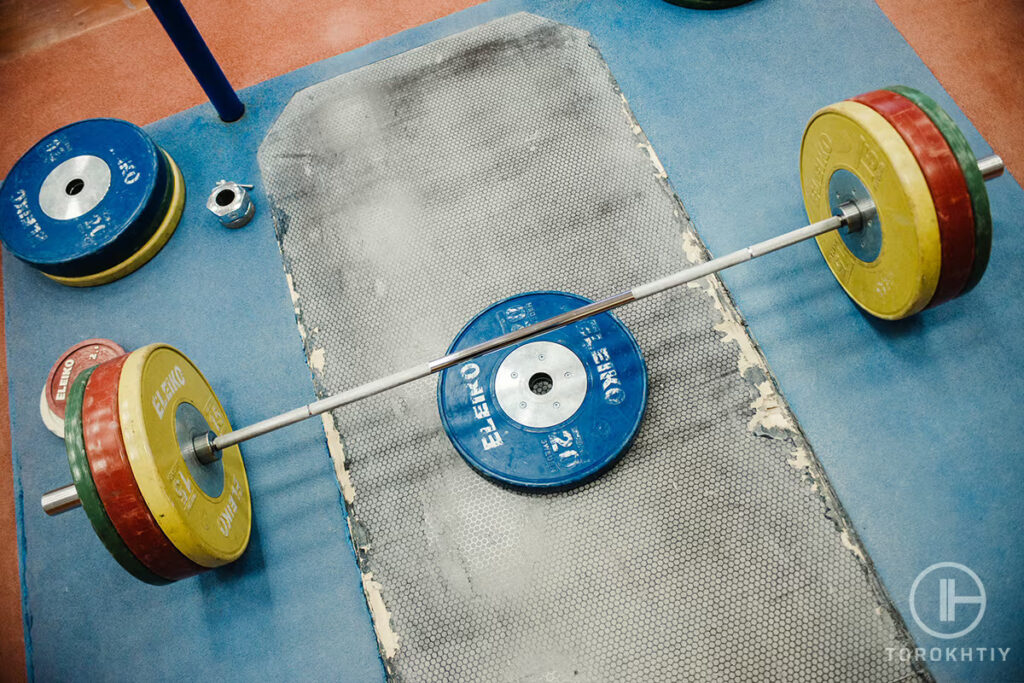
The bearing bar is designed specifically for Olympic weightlifting by providing a smooth spin and is targeted just for performing snatch, clean, and jerk workouts to enhance the vertical velocity and power distribution. In theory, you can use this bearing for other training, but it won’t be as effective as it could be.
Overally, you’d better apply the fitting bearing to the corresponding training type to prevent occasional strains, pains, or acute injuries in knees, shoulders, and ligaments.
FAQ
Are Bushings Better Than Bearings?
Generally, you can’t compare these two types of spinning because they’re used for different types of lifting workouts. If you have enough money and have some understanding of Olympic weightlifting, then buy a bearing barbell. Smooth rotation is perfect for Olympic exercises like snatch, clean, and jerk.
However, if you’re an avid powerlifter, or just want to take up lifting weights, then bushings will meet your needs. No extra spinning will be good for starters who need to concentrate on the lifting technique and avoid wrist injury.
Do I Need Bearings on My Barbell?
Bar spin is an integral point of its design and construction. All barbells have their rotation rate that displays how well the sleeves can spin around the shaft. Let’s imagine that there’s no bar spin at all: a bar will rotate in your hands when you lift it from the bottom to the top of the lift.
What’s more, if the sleeves don’t rotate themselves, the inertia motion will make the plates spin when you mount the barbell. This also refers to the bar that will also spin in your hands when you lift heavy loads and perform it fast as well.
Thus, having a bearing system on the barbell is highly important that will not only improve your lifting technique but also prevent hand overload and injury.
Bearing vs Bushing Barbell Final Word
Which barbell spin system is better for you? Generally, the choice of bushing vs bearing barbell depends on your training intentions and what lifting type you plan to incorporate mostly.
If you’re strictly an Olympic weightlifter, a bearing system will come in handy for you. If you plan to perform slower liftings like SBD in powerlifting, then don’t hesitate and select bushings instead.
Although, don’t tighten your purse on buying a high-quality bar with a proper bearing system. The right choice can simplify your training and reduce the friction between the bar and sleeves, which also will prolong the tool’s life expectancy. Entrust our bearing vs bushing barbell overview and choose the option to excel at weight training.
Also read:
- Bumper Plates Buying Guide
- What Is An Ez Bar
- Safety Squat Bar Guide
- Barbell Buying Guide
- Best Pull up Bar
References:
- Training Strategies to Improve Muscle Power Is Olympic-style Weightlifting Relevant? // Journals: https://journals.lww.com/acsm-msse/Fulltext/2017/04000/Training_Strategies_to_Improve_Muscle_Power__Is.15.aspx
- Estimation of peak vertical velocity and relative load changes by subjective measures in weightlifting movements // Ncbi: https://www.ncbi.nlm.nih.gov/pmc/articles/PMC9331341/.
- Injuries among weightlifters and powerlifters: a systematic review // Bjsm: https://bjsm.bmj.com/content/51/4/211.long.
- Narrative review of injuries in powerlifting with special reference to their association to the squat, bench press and deadlift // Ncbi: https://www.ncbi.nlm.nih.gov/pmc/articles/PMC6059276/.
- Photos are made by Torokhtiy Media team.
Why Trust Us?
With over 20 years in Olympic weightlifting, strength training, nutrition coaching, and general fitness our team does its best to provide the audience with ultimate support and meet the needs and requirements of advanced athletes and professional lifters, as well as people who strive to open new opportunities and develop their physical capabilities with us.
By trusting the recommendations of our certified experts in coaching, nutrition, and sports training programming, as well as scientific consultants, and physiotherapists, we provide you with thorough, well-considered, and scientifically proven content. All the information given in the articles concerning workout programming, separate exercises, and athletic performance, in general, is based on verified data.
The product testing process is described in more detail here.
Author: Ihor Shymechko
Pro Olympic Weightlifter, Coach
Best Results: Snatch – 208 kg,
C&J – 240 kg
Ihor has been a professional weightlifter since 1996, boasting over two decades of competition experience. His notable achievements include clinching the European Championship in 2009 and securing a silver medal in the 105kg division at the Senior World Championships in 2011. Ihor represented his country in the 2008, 2012, and 2016 Summer Olympics. After retiring from competitive weightlifting, he transitioned to coaching, leveraging his vast experience to guide athletes who now compete on both national and international stages.



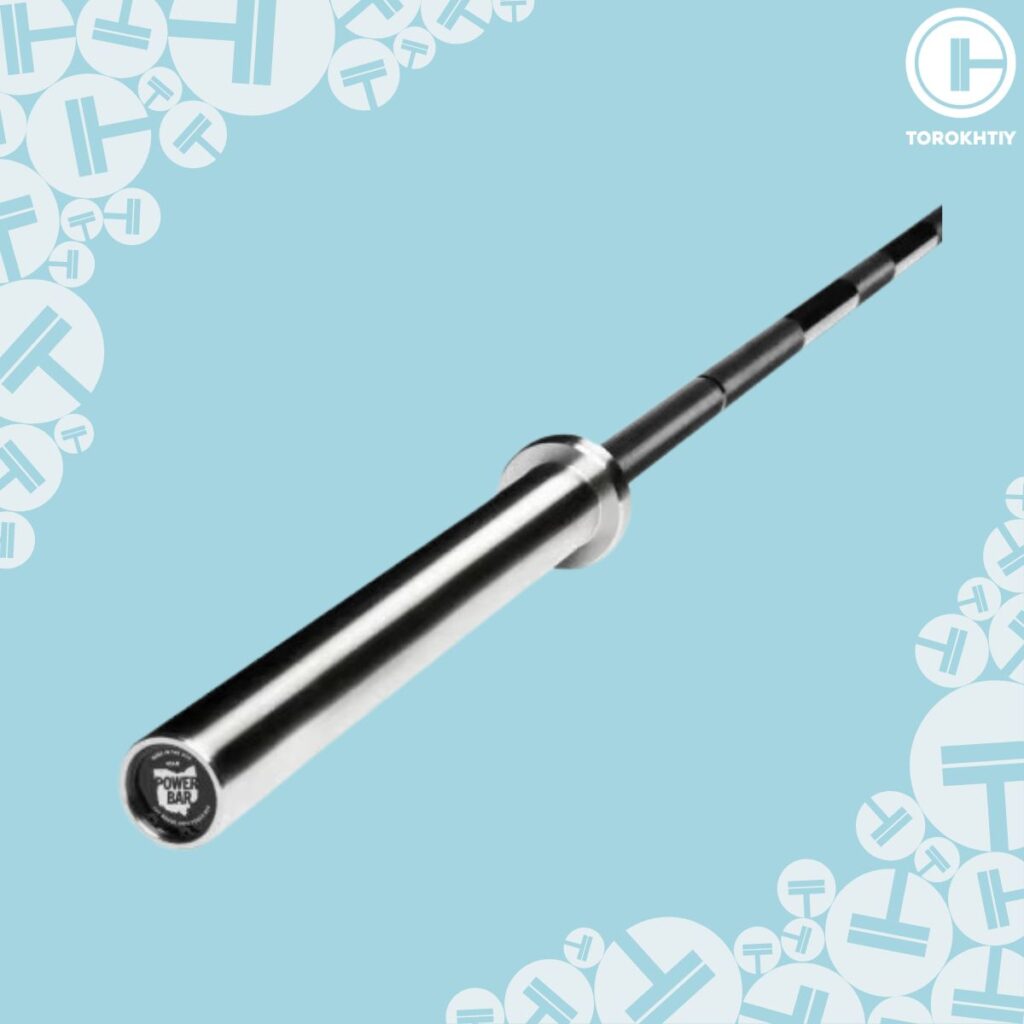
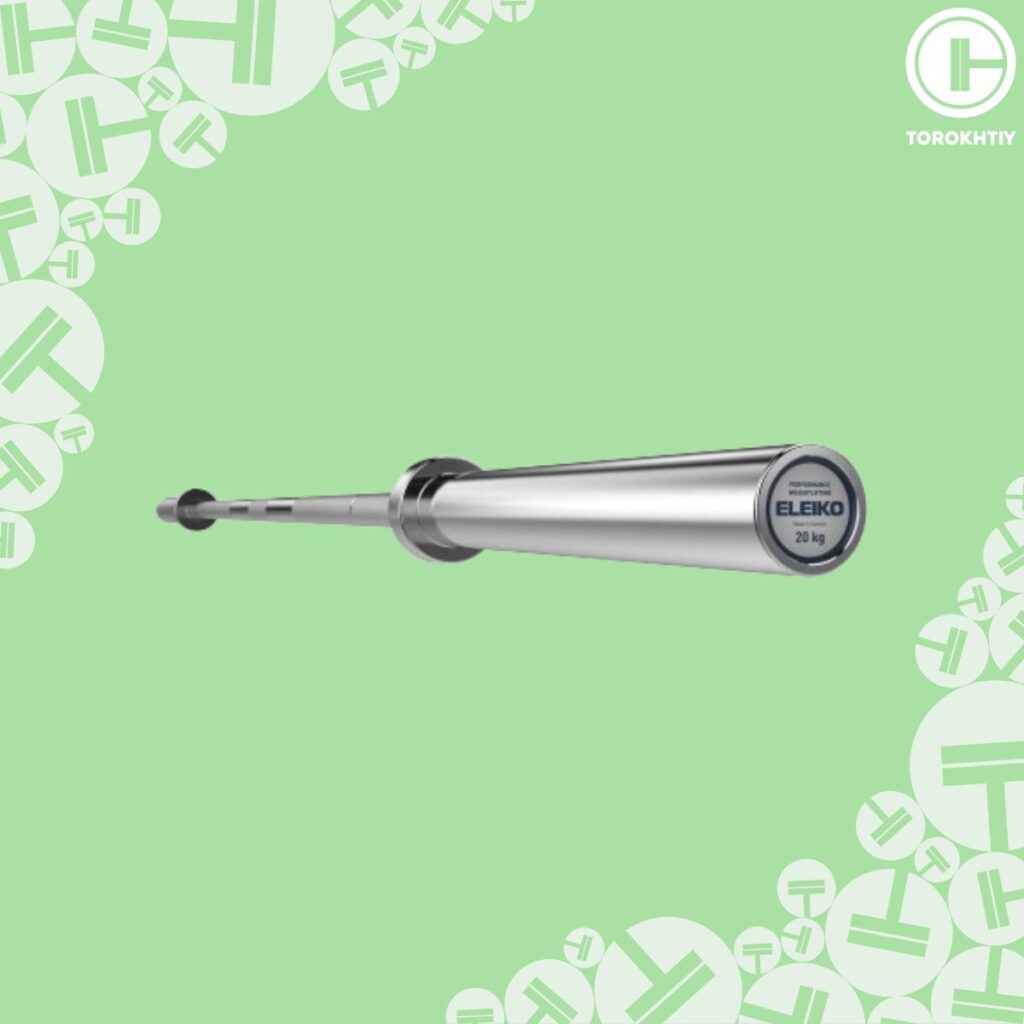
Still have questions after reading our article? Unlock your full potential by engaging with our experts and community! Don’t hesitate — leave a comment below and Ihor Shymechko will provide a personalized answer and insights to help you reach your goals.